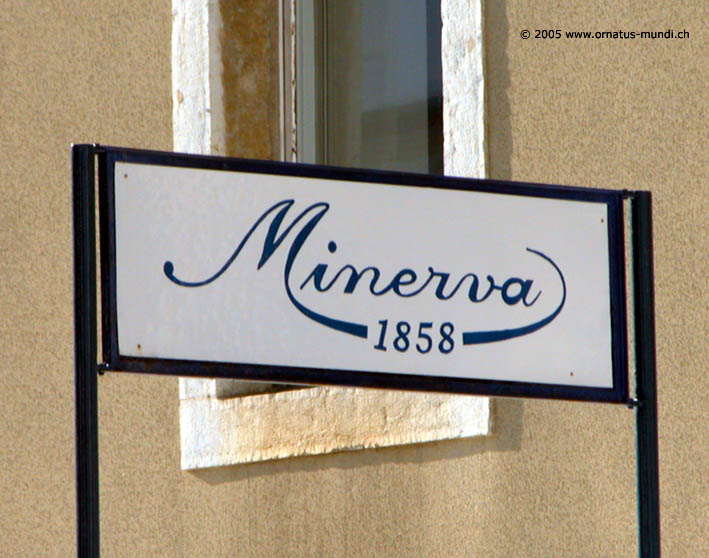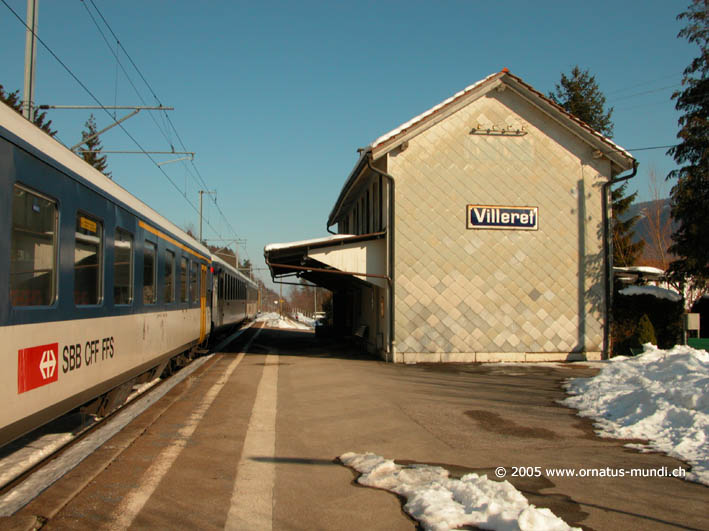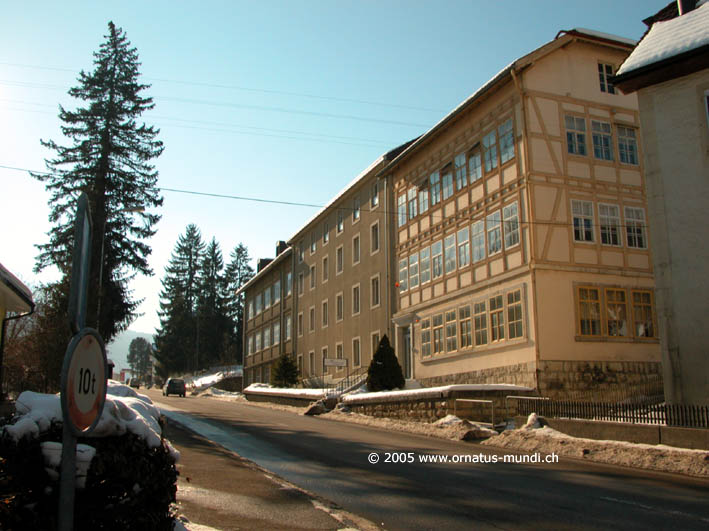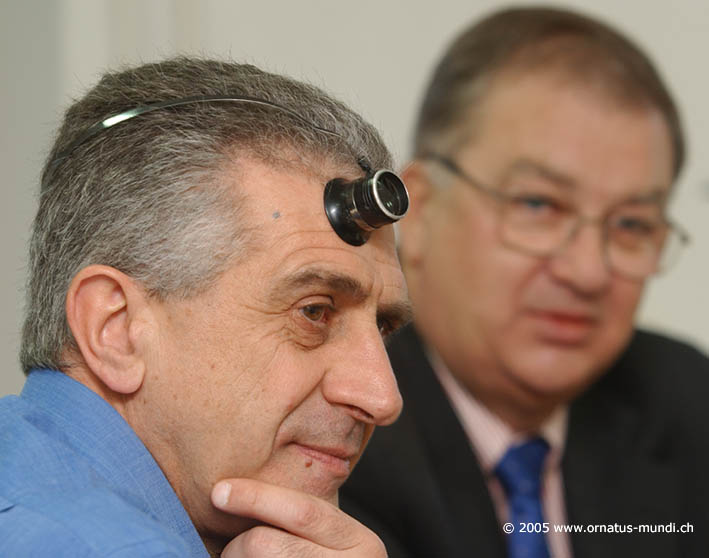Like Phoenix from the ashes - the astonishing rebirth of Minerva SA, Villeret
by Magnus Bosse, May 2005
Part
1
1.
Introduction
This is the story of a beloved little darling, which was tenderly cherished
by the community, then came of age, realised that the path it followed
would lead to perish, consequently changed attitudes and mission, re-entered
the scene as a shining beauty, and then lost support and fellowship.
It is a story about romance and disappointment, about betrayal and the
struggle to survive.
Welcome to Villeret! This little village in the Swiss Jura, located
next to famous watchmaking locations like Cortebert, Tramelan and St.
Imier, is well-known in the watch-world for two manufactures: Blancpain
(which was founded there, but no longer has a facility here) and Minerva,
which is the topic of this article. Minerva, foundet in 1858 by Charles-Yvan
and Hyppolite Robert, was known as a small manufacture producing its
own, in-house made movements, most notably the handwound movements Cal.
48 (subseconds) and Cal. 49 (indirect central seconds). This movements,
which were decent movements, but not Haute Horlogerie masterpieces,
were characterised by geometric shapes of the bridges observing the
rules of the Golden Section. Consequently, they found themselves encased
into a wristwatch named Pythagore. These watches were available
for very modest prices, giving many of us the chance to obtain a true
manufacture watch for a most affordable price. The company was run by
the Frey family since 1935 (although it was owned by Mr Jacques Pelot,
Uncle of André Frey, since the 1920 years), with André
Frey (who passed away in 2004 aged 92) and his son Jean-Jacques Frey
at the helm. The former significantly re-designed the shapes of the
Cal. 48/49 in the 1940s to the famous geometric forms, which added much
to the romance of Minerva watches. The Freys managed to feed the internet
watch aficionado community with a hospitality which was at that time
rarely seen in watch world. Furthermore, decent, honest watches without
the attitude of luxury, that was the convincing charme on Minerva -
until the year 2000 entered the scene!
What happened? The Freys sold the company to the italian investor Emilio
Gnutti, left and a new (italian) team led by Beppe Menaldo as CEO and
Demetrio Cabiddu as the head of the technical department took over the
responsibility for Minerva. This team turned the company upside down,
apparently with complete lack of any sense for Minervas charme and 'brand-DNA'
(just to use a term obviously much liked by CEOs who just entered a
new company). Minerva now charged five times the sum formerly asked
for their watches. The internet watch community was in sedition, did
not understand what was going on, or most likely did not want to realise
the obvious - a significant change.
I - like many others - could not believe this. Feeling attracted by
the 'old' Minervas myself, I was quite eager to see what is all behind
the abrupt change, if and and how the new prices were justifyable by
the alleged, but so far not proven, new, fundamentally improved quality
of today's Minerva watches. Was this endeavour a 'nice try' to milk
a cash-cow? Or was it much more, a significant turn into the realm of
Haute Horlogerie with an own, different identity and mission?
A quote which cites the CEO, Mr. Menaldo, in a german watch magazine
about two years ago sounds promising: "We want to be cited
together with Patek Philippe and A. Lange and Söhne if watch aficionados
talk about the finest watches!". Time for a reality check!

I have to admit I had previously contact with 'new' Minerva, namely to Demetrio Cabiddu, whom I asked for spare parts which I needed for an own watch project based on a vintage Minerva movement (I will not provide you with any further info on that project at the time being ;-)). Mr. Cabiddu always answered very quickly, with a most helpful attitude, provided me with the parts I requested and gave even technical and historical advice for my project - is this, so I asked myself, the typical attitude of people only trying to make money? My interest grew...
Then, suddenly, there was a certain, small time-slot free of any other obligations in early February, and I decided to meet my fate and contacted Minerva with a request for a visit. To my delight they were ready to accept me as a visitor, and allocated 90min for my visit, but included the prohibition to take pictures. Well, the first obstacles were overcome, which made me quite happy and positive considering the experience the company made with the watch enthusiasts community.
My train to Villeret left Zurich at 9 o'clock in the morning on a very beautiful, sunny day...


I was welcome by Ms. Huguenin and quickly introduced to Minerva's CEO, Mr. Menaldo (image below, background), the sales manager, Mr. Villiers, and Mr. Cabiddu, the head of the technical department (image below, foreground). On the way to the meeting room, I could catch a few glimpses into some workshops - many rooms empty or under reconstruction, some filled with state-of-the-art toolings, some with vintage ones, other ones with apparently old spare parts. At least, here seems to be a real manufacture still in operation. A comfortable feeling embraced me.
Not unexpectedly, I was asked by Mr. Menaldo to explain my mission. A certain frustration about the discussions on Minerva amongst watch aficionados on the internet in the recent years left a reluctance towards any representative of these fora. Obviously, I managed to overcome this inhibitions, and in the end, my visit lasted not only 90min, but nearly 300min, I was allowed to take any pictures (well, nearly any to be precise, as no manufacture understandably would allow to take pics of early prototypes) I wanted, and Mr. Menaldo even was ready to give me a highly interesting interview (don't miss it, it is at the end of my article!)!

I have
to admit that I'm truely smitten by the way the Minerva watches are
created now. This is finest watchmaking at its best, which combines
true handwork (to an extend rarely seen even in the highest regarded
manufactures!) where it serves to confer an atmosphere of best craftsmanship
and individual personality to each single watch, and newest computer-based
CAD-design- and CNC-aided production technologies to ensure utmost precision.
Please follow me to Part 2 - the chapter which demonstrates how watches
are crafted at Minerva today!